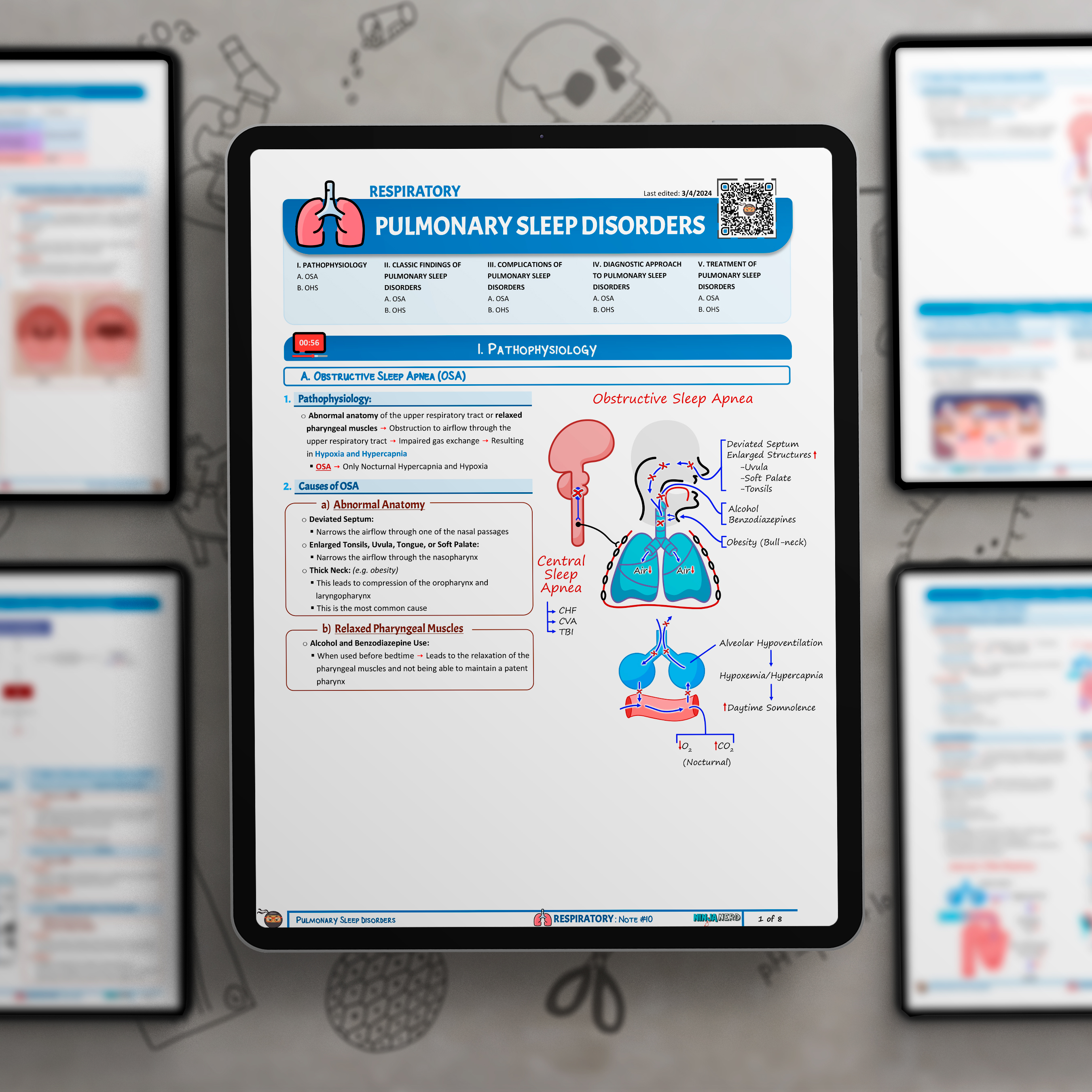Please help support Ninja Nerd to continue creating free medical videos. All donations we receive are put directly into content creation so we are able to continue providing these videos for free. Thanks!


Ninja Nerds!
Professor Zach Murphy will be presenting on Pulmonary Sleep Disorders. We will be going into detail on the following main objectives:
1. Definition and Classification of Pulmonary Sleep Disorders
- Gain an in-depth understanding of what Pulmonary Sleep Disorders encompass, including conditions like sleep apnea and obesity hypoventilation syndrome.
- Learn the classifications based on pathophysiology, such as central sleep apnea, obstructive sleep apnea, and hypoventilation disorders.
2. Pathophysiology and Etiologies
- Delve into the underlying mechanisms that contribute to pulmonary sleep disorders, from anatomical abnormalities and neuromuscular dysfunction to hormonal imbalances.
- Grasp how the pathophysiology correlates with the clinical manifestations of each sleep disorder.
3. Clinical Manifestations and Presentation
- Recognize common signs and symptoms such as snoring, daytime sleepiness, insomnia, and morning headaches.
- Discern the severity indicators, including excessive daytime sleepiness, cognitive impairment, and observed episodes of interrupted breathing during sleep.
4. Diagnostic Criteria and Tools
- Master the diagnostic modalities available, including polysomnography, multiple sleep latency tests, and home-based tests.
- Familiarize yourself with the latest diagnostic criteria as outlined by authoritative organizations like the American Academy of Sleep Medicine.
5. Initial Management Strategies
- Examine evidence-based approaches for symptom management, including lifestyle modifications and CPAP therapy.
- Learn the role of supportive treatments like cognitive behavioral therapy for insomnia (CBT-I) and why they are vital.
6. Definitive Management Approaches
- Explore advanced treatment options, from pharmacological interventions like modafinil for narcolepsy to surgical interventions for obstructive sleep apnea.
- Understand the risks and benefits of these approaches, supported by the latest medical guidelines and research.
7. Complications and Prognosis
- Discuss potential complications such as cardiovascular diseases, metabolic syndromes, and decreased quality of life if left untreated.
- Explore prognostic factors like treatment compliance, disease severity, and associated comorbidities.
Table of Contents:
0:00 Lab
0:07 Pulmonary Sleep Disorders Introduction
0:41 Pathophysiology | Obstructive Sleep Apnea
8:40 Pathophysiology | Obesity Hypoventilation Syndrome
15:21 Complications | Secondary Hypertension
17:55 Complications | Pulmonary Hypertension
19:15 Complications | Atrial Fibrillation
20:54 Complications | Respiratory Failure
23:28 Diagnostic Approach
25:46 Treatment
28:36 Comment, Like, SUBSCRIBE!
Sorry, but there are currently no notes available for this video.
Check back again soon, or contact us to find out when they will be available.